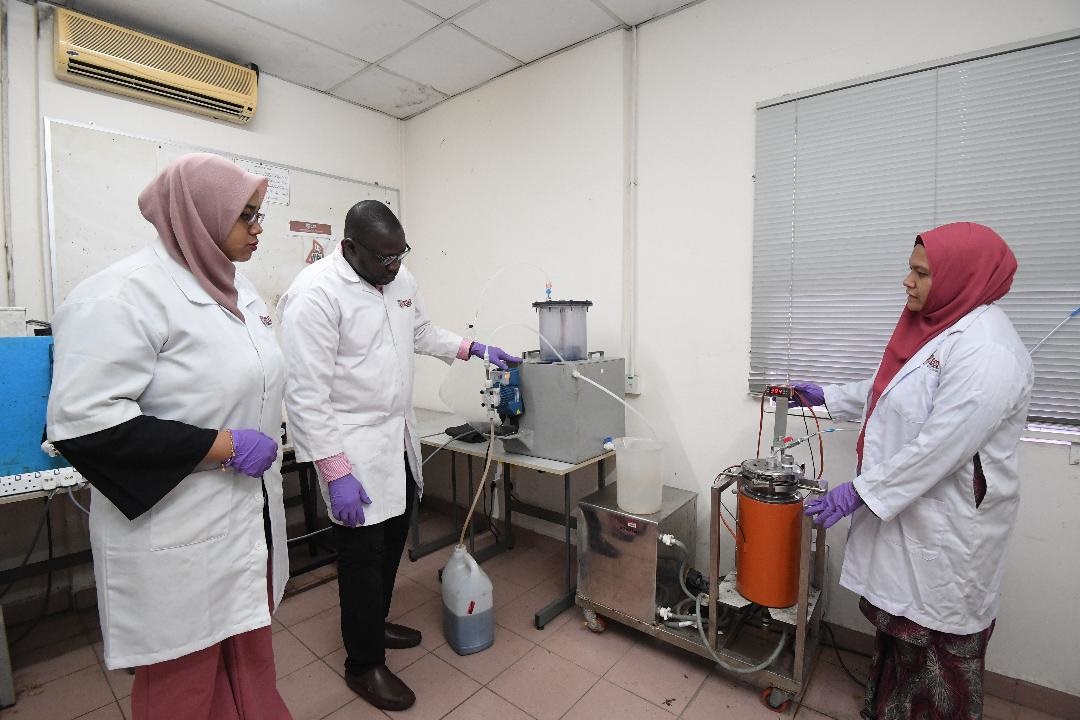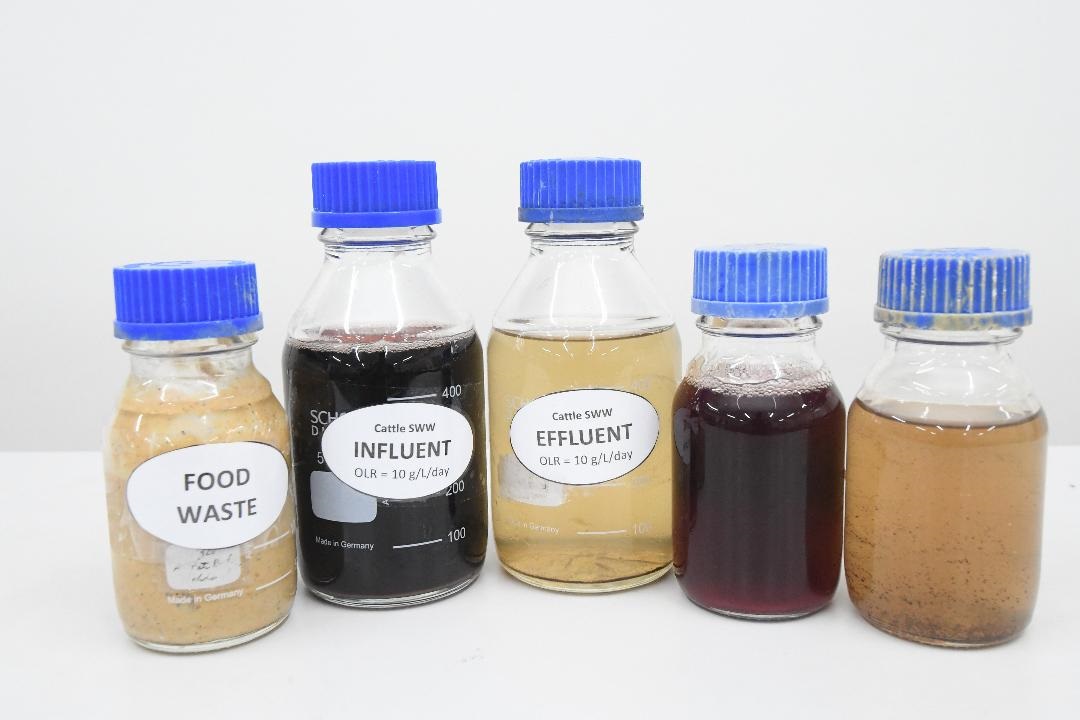By: Azman Zakaria
Photo by: Noor Azreen Awang

SERDANG: Wastewater from cow and chicken slaughter and slaughterhouse wastewater, as well as solid or semi-solid sample of feces from cows, pigs and chickens can now be treated, and the products from the treatment can be reused for a specific purpose.
The Hybrid Upflow Anaerobic Sludge Blanket Reactor (UASB) treatment method, an innovation developed by researchers at Universiti Putra Malaysia (UPM), is used to treat liquid-like residues such as wastewater from cow and chicken slaughter and from slaughterhouses.
The innovative Continuous Stirred Tank Reactor (CSTR) treatment method is used for the treatment of solid or semi-solid sample such as food wastes and feces from cows, pigs and chickens.
A lecturer in the Department of Civil Engineering, Faculty of Engineering, UPM, Assoc. Prof. Dr. Syazwani Idrus, said the UASB method treatment allows wastewater, which is usually dark red, to be changed to light orange, light yellow or light grey that meets Standard B, a requirement set by the Department of Environment (DOE).
She said the UASB treatment system also produces methane gas that can be an alternative for cooking gas and can be converted into energy to power electric lamps.
"Treated wastewater is discharged through a channel at the bottom of the UASB, while methane gas is discharged through a channel at the top of the UASB," she said.

The treatment process takes 24 hours, and it produces 85 percent or 25 liters of methane gas.
She led the research group which includes students, Tuan Nur Farhana Tuan Mohd Marzuki and Mohamed Ali Musa.
Assoc. Prof. Dr. Syazwani said the UASB can also be used for sewage treatment and leachate treatment, i.e. water at dumpsites.
“This innovation has a media filter inserted to increase methanogenic populations. The microorganism allows for treatment to be done effectively,” she said.
She said the treated water could be used to water plants and clean the floor of slaughterhouses.
She said through the University Community Transformation Centre (UCTC), UPM, she had organised a knowledge transfer programme of the method to the farmers and staff of Veterinary Departments in Perak and Pulau Pinang in 2019.
The innovation won a bronze medal at UPM's Engineering Innovation Exhibition (EIE) 2019.
Assoc. Prof. Dr. Syazwani said the CSTR innovation was used for solid and semi-solid samples from food wastes and animal feces such as cows, pigs and chickens by inserting them into the CSTR.
She said after going through the 24-hour process, the digestate produced could be used as fertilizer for a variety of plants.
According to her, it also produces methane gas up to 80 percent or 42 liters, which is much higher than that produced by UASB despite using only about 0.5 percent solid of the total liquid residue used by the UASB system.
She said the CSTR used the acclimatisation method to improve the organic loading rate and reactor resistance.
The innovation was developed with FRGS (MOE) grant three years ago. The innovation has attracted industry such as TNB Research Sdn Bhd to carry out a detailed study on biogas production. Assoc. Prof. Dr. Syazwani received an industry grant worth RM130,000 in 2018/2019 and RM 218,000 in 2019/2020 for her research on the potential of producing bio gas from food and livestock wastes from TNB Research Sdn Bhd.
The project also involved a co-researcher, Assoc. Prof. Dr. Mohd Razif Harun, who is also a lecturer from the Faculty of Engineering. - UPM
Date of Input: 31/01/2020 |
Updated: 12/03/2020 | hairul_nizam
MEDIA SHARING




























